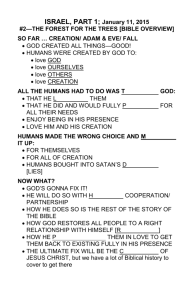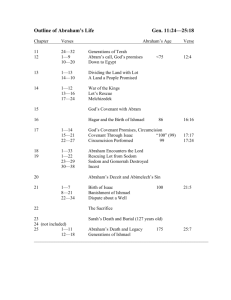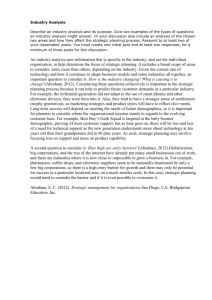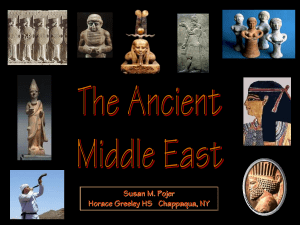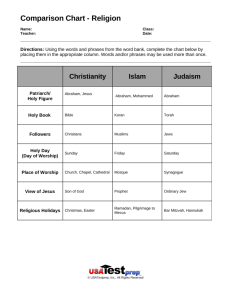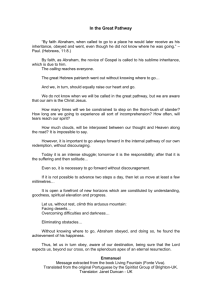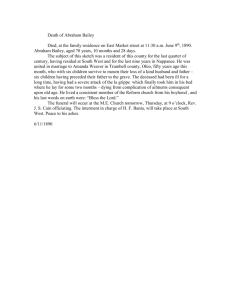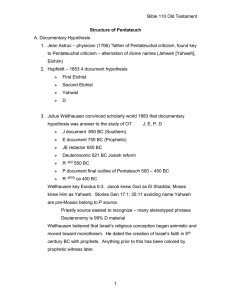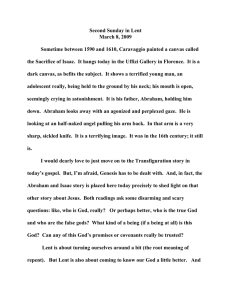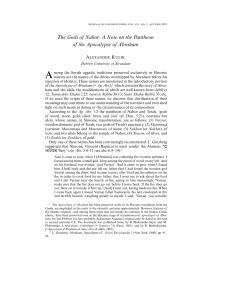2 Sunday in Lent March 4, 2012 8 AM and 10 AM Liturgies
advertisement
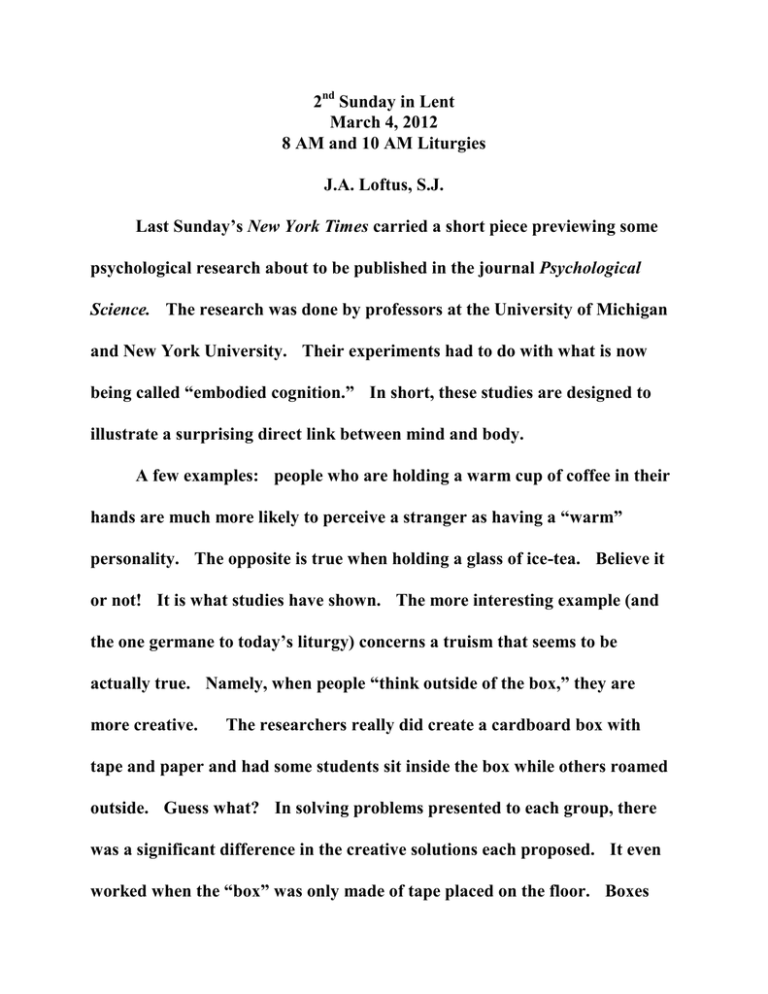
2nd Sunday in Lent March 4, 2012 8 AM and 10 AM Liturgies J.A. Loftus, S.J. Last Sunday’s New York Times carried a short piece previewing some psychological research about to be published in the journal Psychological Science. The research was done by professors at the University of Michigan and New York University. Their experiments had to do with what is now being called “embodied cognition.” In short, these studies are designed to illustrate a surprising direct link between mind and body. A few examples: people who are holding a warm cup of coffee in their hands are much more likely to perceive a stranger as having a “warm” personality. The opposite is true when holding a glass of ice-tea. Believe it or not! It is what studies have shown. The more interesting example (and the one germane to today’s liturgy) concerns a truism that seems to be actually true. Namely, when people “think outside of the box,” they are more creative. The researchers really did create a cardboard box with tape and paper and had some students sit inside the box while others roamed outside. Guess what? In solving problems presented to each group, there was a significant difference in the creative solutions each proposed. It even worked when the “box” was only made of tape placed on the floor. Boxes make for duller people! Even if they are just imaginary boxes! Why does this have anything to do with today’s liturgy? Because if we approach two of today’s readings with our usual thinking, or our usual theologies, we are doomed to reach some rather bizarre conclusions. Or we will just give up trying to figure out what any of it means. Today’s liturgy brings us two more stunning Bible stories. The first is a description of the second covenant God establishes. Last week it was a covenant with Noah and his descendants sealed by the rainbow. Today it is the covenant with Abraham almost sealed with his son’s blood. What? What kind of god would do such a thing? There’s the question on everyone’s mind (if you’ve paid attention and not already gone numb by the story.) A few years ago I tried to verbally describe a Caravaggio painting that hangs in the Uffizi gallery in Florence, Italy. It is an image of Isaac being held down on the ground by his neck; his mouth is open and he seems to be crying in astonishment. Abraham just looks away with an agonized and perplexed gaze. And then there is a half naked angel pulling Abraham’s arm back. In Abraham’s hand is a very sharp, sickle knife. It is a terrifying image–it was then and it still is. Who is this god? Mine? Yours? The one we worship here today? 2 You see the problem if we just stay inside our little box? This story is too hard to ignore. Is god really that cruel and sadistic? In the name of god do we murder our children? Don’t answer too quickly from within your box. Because, in fact, this image of a god who demands children to be murdered is not just one from the ancient book of Genesis. It continues to take place on the front pages of our newspapers. Children are being sacrificed again and again all around the world before strange images of a god. Children fly planes full of people into huge towers. Children strap explosives to their chests and murder thousands of innocent people. All in the name of god. What could cause human beings to think that a god wanted them to do these things? Maybe it has something to do with continuing to think within some pretty strange boxes. The violence in the book of Genesis is sadly repeated daily and in all three of the great monotheistic religions. God’s testing of Abraham is a revered story in Christianity, Judaism, and Islam. That’s more than three billion people who all have this story in common. My brothers and sisters, this is a crucial text to get right! Lives still depend on it. We need to get outside of our usual box. And we can begin. There are actually two different gods in this story. 3 (I’ll spare you the heavy exegesis; you’ll have to trust me for now.) The god who asks for the sacrifice is named Elohim, (vs. 1 & 12). This is an ancient name for the Jewish god, but it is also the name given to all the pagan gods, the “false” gods of the heathen. The name given to the god who stops the sacrifice is Yahweh, the distinctive Hebrew name for God that the Jewish people to this day never say or write. The God who makes the sacred promise to Noah, to Abraham, to Moses (in the burning bush) is Yahweh, the name of the One God of Israel for eternity, the “real” God. And it is that God who appears again on the mountain top and in the cloud with Jesus, and Elijah, and Moses. The question remains the same in both readings: who is the real God? How do we know? What does it all mean? And in a blinding moment of revelation, from high on a mountain top, God, the real God, speaks: “This man–this human being just like yourselves in all things–is my Beloved. Listen to him.” Watch him. Learn from him. He is here to end all violence, once and for all (cf. Rene Girard). For an instant, Jesus “morphs” into who he truly is. (That is, by the way, the correct word, morphs. The Greek for transfiguration is metamorphase.) The next time you want to be “outside the box,” the next 4 time you are looking for the real God, grab a mirror. And take a good long look at the face of the real God. It demands not violence but love. It is forever human. It is forever for us. It is in us. It is us! Let’s share some “embodied cognition” with bread and wine–outside the box. 5
